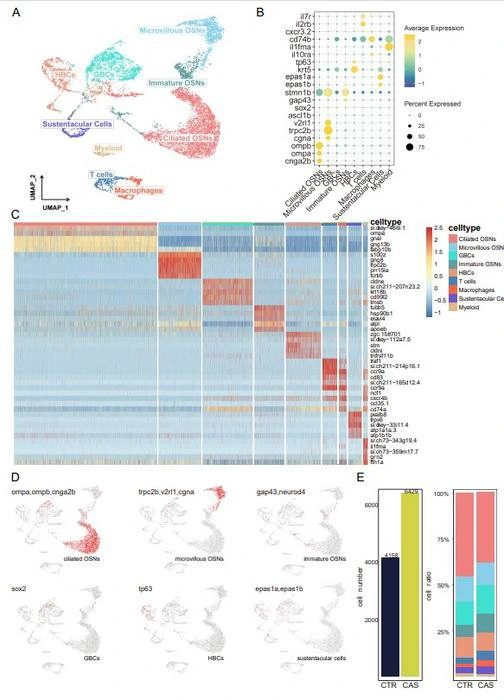Groundbreaking Technique Reveals Fish Sense of Smell

View pictures in App save up to 80% data.
Recent research has revealed significant new findings about the cellular structure and functional processes of the zebrafish olfactory epithelium, utilizing cutting-edge single-cell RNA sequencing technology. This advanced genomic technique offers an unparalleled view into the complex architecture and molecular characteristics of individual cell types within the zebrafish's olfactory system, a species renowned for its remarkable sense of smell. Led by a distinguished group of scientists from China, the study highlights the cellular variety present in the olfactory epithelium, identifying nine unique cell types that each play specialized roles in the chemical detection linked to zebrafish behavior.
Zebrafish, known scientifically as Danio rerio, are widely recognized as key model organisms in the fields of neurobiology and behavioral studies. Their advanced olfactory system is vital for mediating essential survival behaviors such as feeding, selecting mates, and evading predators. In their study, researchers set up a control group alongside a group exposed to conspecific alarm substances (CAS)—chemical signals emitted by injured fish that elicit a startle reaction in others. This targeted approach enabled the researchers to explore the potential adaptability of cell populations within the olfactory epithelium when faced with environmental stressors.
By employing single-cell sequencing techniques, the researchers were able to delineate a range of cell types within the olfactory epithelium of zebrafish, which included both immature and mature olfactory sensory neurons (OSNs), horizontal basal cells, and sustentacular cells. Furthermore, they identified immune cells such as lymphocytes and myeloid cells that exhibit critical immune signaling, highlighting the relationship between the sense of smell and immune function. The research team conducted an advanced clustering analysis that unveiled unique transcriptional profiles for each cell type, showcasing a significant degree of cellular diversity that had not been thoroughly investigated before.
A particularly significant element of the research focused on assessing how CAS influences transcriptional dynamics in the olfactory epithelium of zebrafish. Subsequent analyses revealed marked alterations in the ratios of different cell types and certain populations of olfactory sensory neurons (OSNs). The lead author, Wenjun Chen, expressed that the study's results indicate that CAS exposure may trigger apoptosis in OSNs, leading to a reduction in their overall numbers. This reduction initiates a compensatory response, activating OSN progenitor cells to restore the diminished sensory neuron population, thereby underscoring the adaptability of the olfactory system.
This research broadens our comprehension of how fish cells react to chemical signals, especially when under stress. While earlier studies suggested that teleost fishes harbor various cell types, this investigation offers a more precise and comprehensive view. The importance of this work extends beyond simply identifying different cell types; it also demonstr